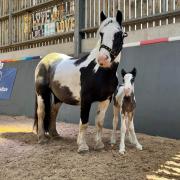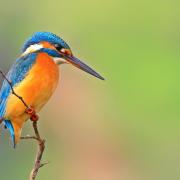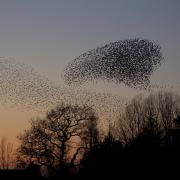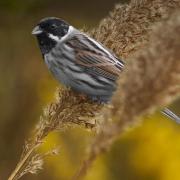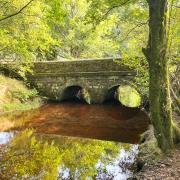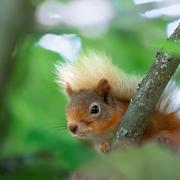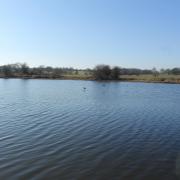Lancashire Wildlife Trust Senior Reserves Officer John Lamb on the wonders of willow.

A wonderful sign that spring is upon us is the bursting open of willow buds, revealing the silky grey-white catkins of the goat or pussy willow that open to display yellow-tipped "anthers".
Willows are dioecious, which means the male and female flowers are on separate trees, hence the willow trees and shrubs are either male or female, and their catkins are different. Male catkins are grey-white and oval, which become yellow when ripe with pollen, female catkins are longer and green.
Catkins provide an important early source of pollen and nectar for bees and other insects, and birds forage for caterpillars and other insects. Look out for bees and other pollinators collecting pollen from the male catkins.
Pollen is believed to help the ovaries of the queen bees ripen, so that once she has found a suitable nest, she can lay her eggs. Pollen is an essential part of the bee's diet, providing a wide range of nutrients including protein, carbohydrates, lipids, vitamins, and minerals.

Around 450 species of insects use willows for some or all of their life cycle -more than any other native British tree species, including the oaks at 423. Willow leaves are eaten by caterpillars of a number of moths, including the sallow kitten, sallow clearwing, dusky clearwing and lunar hornet clearwing. It is also the main plant on which the female purple emperor butterfly lays her eggs and which the caterpillars eat.
There are 18 different species of willow that are considered native to the British Isles and Ireland, of which seven can grow taller than six metres and can be called trees; almond, bay, crack, goat, great, white willows plus osier. Four are shrubs growing between 2.5 and 6m; eared, dark-leaved, purple and tea-leaved willows. Seven are low-growing shrub willows between 10 centimetres and 2.5m; creeping, downy, dwarf, mountain, net-leaved, whortle-leaved and woolly willows.
An additional five species, the European violet-willow, heart-leaved willow, olive willow, sachalin willow and Siberian violet-willow, have been introduced from other countries and planted out, typically in parks and gardens, but can also be found growing wild.
White willow has been recorded growing to 33 metres tall, and crack willow to 25 metres, with the other willow trees usually growing between 10 and 20 metres.
The age that willows live for is often not recorded in the literature, but white willows are known to live for 100-120 years, whereas goat or pussy willows can live for more than 500 years.
Willows have made it into our culture and folklore, with books such as Wind in the Willows by Kenneth Grahame, first published in 1908, willow-pattern plates, wallpaper by William Morris, songs such as Willow by Joan Armatrading, Willow's Song by Paul Giovanni, and Weeping Willow by The Verve. The sound boxes of harps used to be carved from solid willow wood.
Willow wood has been used in house building, as frames for coracles, wheel spokes in Celtic chariots, for clothes pegs, turnery, tanning leather, as fodder for livestock, and to make charcoal. Willow's ability to absorb shock without splintering is still utilised to make cricket bats and stumps - cricket bat willow is a variety of the white willow and Dutch clogs are traditionally made from willow wood as well. Willow regrows quickly whether felled at the base (coppicing) or above the height at which grazing animals can reach (pollarding), often growing four to 10 feet in one season. Cuttings or twigs pushed into the ground can grow roots and produce a new tree and, in other parts of the world such as China, willow has come to symbolise immortality, renewal and vitality.




